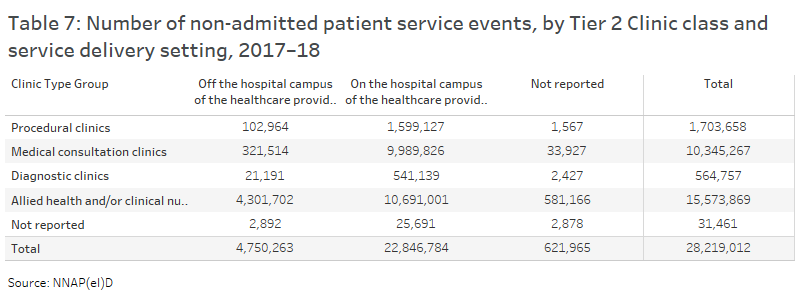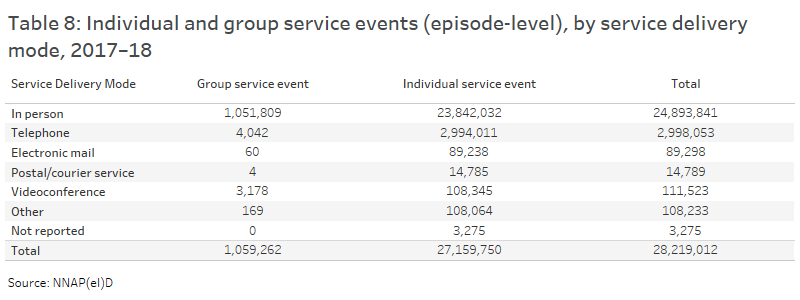Service delivery
Non-admitted patient care usually involves a request for service being made. The service may be provided:
- at the hospital or another location
- face to face (in person) or by another method
- by one or more health-care providers.
Service requests
A non-admitted patient service can be requested by other areas within the hospital (for example, from the emergency department) or from elsewhere (for example, from the patient’s general practitioner, specialist or an organisation).
Service requests include both referrals (for example, from a general practitioner [GP]), and informal requests for service (for example, self-referral for an unplanned ‘walk-in’ service). Some requests for service may occur between different outpatient clinics. For example, a patient may be referred by their GP to an aged-care clinic, and after assessment at the aged-care clinic, the patient is referred to an allied health clinic.
For individual non-admitted patient service events (for which the service request source was reported), 40% of service requests were from within the same hospital, 38% were from either the patient’s GP or specialist, and 8% were self-requested (by the patient).
The service request source was not reported for 55% of individual service events and 67% of group service events.
Service delivery setting
The service delivery setting identifies whether the service was provided on campus (at the hospital), or off campus (at another location). Off campus locations can include:
- community health or day centres, or other community facilities
- general practice surgeries or clinics
- residential aged care facilities
- private residences (including the patient’s residence)
- other hospitals.
In 2017–18, 81% of service events were provided on the hospital campus (Table 7 below).
About 4.8 million service events were provided off campus. The majority (91%) of these were for Allied health and/or clinical nurse specialist intervention clinics, and accounted for 28% of service events reported for these clinics.
Renal dialysis—home delivered (haemodialysis or peritoneal dialysis) and Enteral nutrition—home delivered (tube feeding) are examples of Procedural clinic service events that can be provided off campus.
Service delivery mode
In 2017–18, 88% of individual service events were delivered in person and 11% were delivered by telephone (Table 8). Almost all group service events were delivered in person.
Service events involving multiple health care providers
The multiple health-care provider indicator identifies whether a single non-admitted patient service event involved three or more health-care providers, either individually or jointly. The health-care providers may be of the same profession (medical, nursing or allied health), but each must have a different speciality. For example, a service event at a rehabilitation clinic could involve a physiotherapist, an occupational therapist and a nurse, all individually.
In 2017–18, 1% of individual service events and 5% of group service events were reported as involving multiple health-care providers.
Data visualisation of table 7

See Table 2.4 and S2.8 for caveat information related to these data. Available to download in the Data section.
Data visualisation of table 8

See Table 2.5 for caveat information related to these data. Available to download in the Data section.
Where to go for more information
- Additional information on service delivery setting is in Table S2.8.
- Additional information on service events involving multiple health care providers is in Table S2.9.
- Additional information on service request source is in Table S2.7.
- Available for download in the data section.


